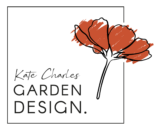- You bought the wrong plant for your soil, aspect, moisture level, or pH level - here's how to know
- soil comes in three broad types - clay, silt and sand. Clay can be identified by how 'claggy' the soil is - does it turn into a quagmire in the rain, and hard as rock in the heat? That's Clay. There are downsides, but it is brilliant at holding onto nutrients, and is easily improved. Silt holds moisture well and is easily cultivated - being reluctant to clump, but can get compacted and is prone to 'capping' (developing a hard crust). Sand is very free-flowing and has great drainage. It warms up quickly in spring, and has a long growing season, however, it can dry out very easily, and nutrients easily wash out of the large particles.
- Your aspect - i.e. is the plant going to be in sun or shade is important - most garden centres do list the plant's requirements on the label, so it's important - you can't ignore this requirement or your poor plant will scorch or fail to thrive.
- Similarly, how wet your soil is will be important to a plant - some plants are drought tolerant (plant those in sandy soils), and some plants cope with waterlogging well (plant those in improved clay).
- Finally, some plants will thrive in acidic soils and some in alkaline soils. Most soils are somewhere in the middle, and most plants will be fine. However, if you have a love of Camellias or Heathers, make sure your soil can support them - no amount of feeding will make up for the soil's basic pH.
- The plant was unhealthy or unsuitable for sale - here's how to tell
- Pot Bound - there are more roots than soil, and they're all curled round the inside of the pot
- Recently transplanted - if you pull the plant from the pot all the soil falls off the roots
- Any evidence of grubs in the soil, nibbled leaves, or critters on the stems, wilting, dry soil, or weeds on the surface of the soil in the pot. Avoid!
- Broken or damaged stems - has probably been dropped or otherwise traumatised.
- The plant was forced into flower, brought in from abroad, or coddled with a peat growing medium.
- This requires a little more plant knowledge, and asking questions of the nursery staff about growing history, suitability, and health. They should be open and honest with you - if not, walk away.
If all of this sounds like too much hassle, or if you want to know more - get in touch to get great advice for your best growing year yet!

